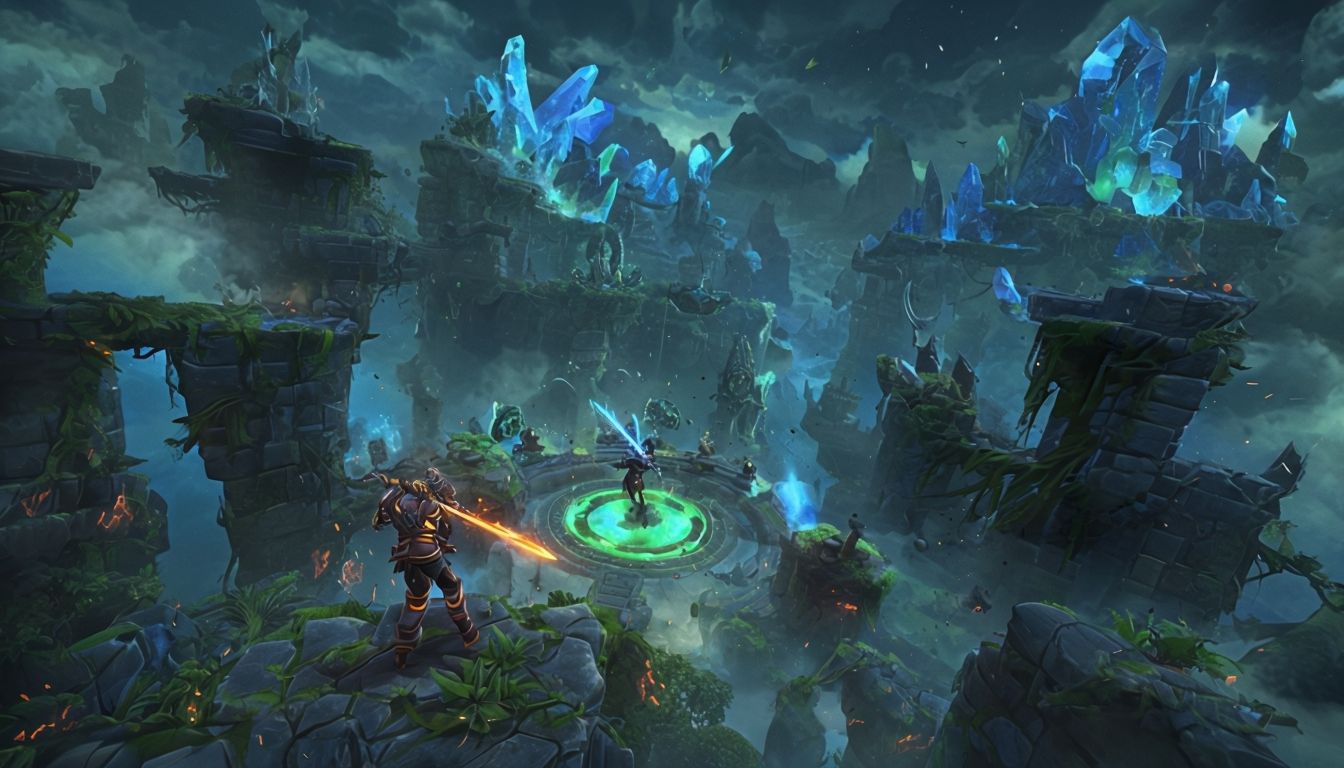Course Overview
Advanced Modeling Tools in Roblox Studio
Meshes
- What Are Meshes?
- Pre-made or custom 3D models used for intricate designs.
- Types: MeshParts (custom models) and SpecialMeshes (basic shapes with custom appearances).
- How to Use Meshes:
- Import custom meshes from external 3D tools (e.g., Blender) or select from the Toolbox.
- Adjust size and orientation using Roblox Studio tools.
- Example Use Case: Adding detailed props like statues, furniture, or vehicles.
Scaling and Grouping
- Scaling:
- Resize objects to create variations in appearance or functionality.
- Shortcut: Use the Scale tool (shortcut key
R). - Example: Resize a tree mesh to create a forest with varying tree heights.
- Grouping:
- Combine multiple objects into a single unit for easier management.
- Shortcut: Select objects and press
Ctrl + G(orCommand + Gon Mac). - Example: Group buildings, fences, and trees to create a town square.
Texturing
- What Are Textures?
- Images applied to object surfaces for realistic or stylized appearances.
- How to Apply Textures:
- Select an object and open the Properties panel.
- Add a texture or decal from the Toolbox or import custom images.
- Example Use Case: Adding wood grain to a table or stone texture to a wall.
2. Building Complex Game Environments
Terrain
- Using the Terrain Tool:
- Access the Terrain Editor from the Home tab in Roblox Studio.
- Features: Add, subtract, paint, and smooth terrain.
- Example Use Case: Create realistic landscapes like mountains, rivers, or caves.
Structures
- Designing Buildings and Bridges:
- Use basic parts (blocks, cylinders) combined with grouping and textures.
- Add details like windows, doors, and decorative trims for realism.
Custom Props
- Definition: Small, unique objects that enhance environment detail.
- How to Create Custom Props:
- Combine basic parts and textures.
- Example: Create a park bench by combining rectangular parts and applying wood textures.
3. Integrating Special Effects for Atmosphere
Lighting Effects
- Key Lighting Types:
- Point Light: Emits light from a single point (e.g., a lamp).
- Spot Light: Creates directional light (e.g., a flashlight beam).
- Surface Light: Illuminates surfaces (e.g., backlit screens).
- Tips for Lighting:
- Use dim, colored lights for dramatic or spooky effects.
- Combine multiple light sources for realistic lighting setups.
Particle Effects
- What Are Particles?
- Visual effects like smoke, fire, or sparkles.
- How to Use ParticleEmitters:
- Insert a ParticleEmitter into an object.
- Customize properties like speed, color, and lifetime for desired effects.
- Example Use Case: Add falling leaves in a forest or glowing embers in a campfire.
4. Hands-On Project: Designing a Detailed Game Environment with Realistic Features
Objective:
- Create a visually rich game environment that incorporates terrain, structures, custom props, and special effects.
Project Guidelines:
- Choose a Theme:
- Example themes: Medieval village, futuristic city, enchanted forest.
- Build the Environment:
- Use advanced modeling tools:
- Terrain for natural elements like hills or rivers.
- Structures for buildings or landmarks.
- Props for detailed items (e.g., furniture, vehicles, signs).
- Use advanced modeling tools:
- Add Atmosphere:
- Use lighting and particle effects to set the mood.
- Example: Flickering torches for a castle or glowing neon lights for a sci-fi city.
- Use lighting and particle effects to set the mood.
- Test the Environment:
- Playtest to ensure visual coherence and player navigation.
5. Peer Review: Assessing and Providing Feedback on Modeled Environments
Purpose of Peer Review:
- Gain constructive feedback to improve design skills.
- Learn from the strengths and creativity of others.
Peer Review Guidelines:
- Evaluate the Environment:
- Does the design match the theme?
- Are the structures, props, and terrain visually cohesive?
- Assess Special Effects:
- Do lighting and particle effects enhance the atmosphere?
- Are effects appropriately placed and not overused?
- Provide Constructive Feedback:
- Highlight strengths (e.g., “Your use of textures really brought the environment to life.”).
- Offer suggestions for improvement (e.g., “Consider adding more variation to the terrain to make it feel less flat.”).


